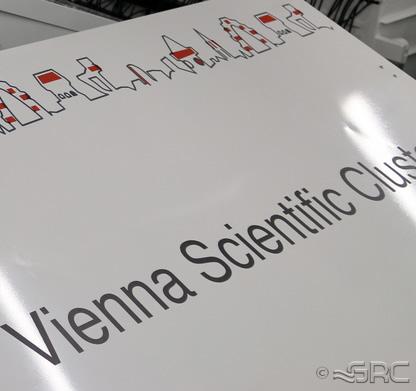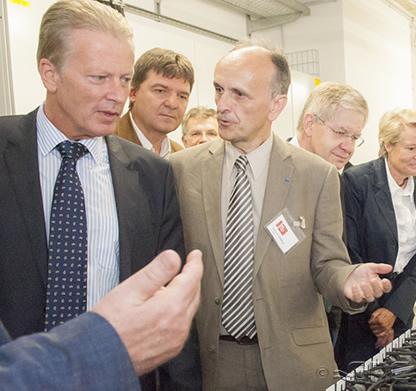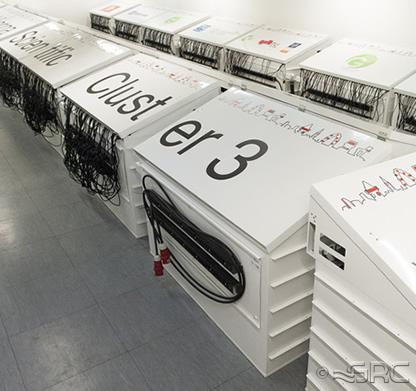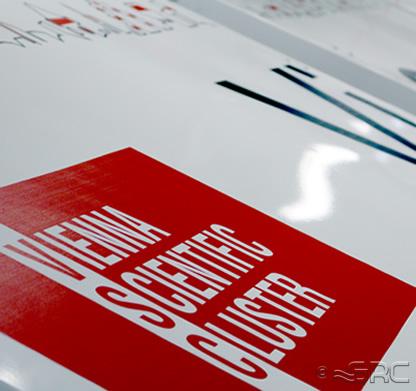Discover how GRC made one country’s most powerful supercomputer powerfully energy-efficient and super-cost-effective, too.

Installation Details
- Location: Vienna, Austria
- Industry: Academic
- Capacity (in MW): 0.55
- Floor Space (in Sq. Ft): 1,096
- Nodes: 2,020
- Customer Since: 2013
The Challenge
A coalition of five Austrian universities known as The Vienna Scientific Cluster (VSC) released an RFP to build a third-generation of the country’s most powerful and efficient supercomputer. The winner would not be determined by upfront price alone, but a combination of factors, notably performance and stability, long-term energy efficiency, along with total cost of ownership (TCO).
Since the winning design would have to fit within a small 1,000 ft2 basement, the group also needed to ensure they would get the most computing power for the available budget, space and power envelope.
The GRC Solution
Partnering with Intel, Supermicro and ClusterVision, GRC brought VSC’s vision to reality, delivering a cluster optimized for cost, performance and density. Ours clearly outperformed even big-brand OEMs plus other precision-cooling solution providers.
We leveraged our patented immersion cooling technology, which maximized density by incorporating servers designed for immersion (SDI), and featured a closed-loop, zero-water-use system.
Because of the small basement area they had to work with, VSC especially favored our ability to minimize site requirements, which saved them the major capital expenditure (capex) of building a new facility.
The Results
VSC had targeted the cost of energy for even an extremely efficient system at about 35% of TCO. Our ICEraQ® solution exceeded this target in both upfront and lower operating costs.
What’s more:
- Our ElectroSafe® coolant lowered the original cooling energy requirements
- VSC attained a cooling PUE of 1.03
- Absent ambient cooling hardware—chillers, air handlers and select power components—and given ICEraq’s minimal site requirements, our design enabled the downsizing of the entire infrastructure, allowing VSC to meet their goal of utilizing the small space they had available
- Our SDI servers cut energy requirements and server costs, freeing a bigger portion of the budget for computing power
SDIs also initiated an incredibly low failure rate—equal to or better than that of air-cooled systems. In fact, the rate was so low that VSC was able to return their spare parts inventory to the hardware supplier.
Because it accepts warm water, our design also eliminated water consumption entirely. Amid Vienna’s largely cool climate, this allowed the use of cost-saving dry cooling.
Testimonial:
“We are setting new standards here, not only in a scientific context, where we can examine complex questions to an even better level, but also in terms of sustainability: the novel, energy-efficient liquid cooling fits in perfectly with our university’s philosophy of conserving resources while remaining open to innovation.”
— Georg Haberhauer, Vice Rector, Vienna University of Natural Resources and Applied Life Sciences (BOKU) with Vienna Scientific Cluster 3 (VSC-3)
About VSC-3:
The Vienna Scientific Cluster (VSC) consists of several cluster systems that have been designed to satisfy the demand for High Performance Computing (HPC) of a consortium of Austrian universities. At this time (2014) there are five VSC partner universities: Vienna University of Technology (TU Wien), University of Vienna (Universität Wien), University of Natural Resources and Applied Life Sciences Vienna (BOKU Wien), Graz University of Technology (TU Graz) together with the universities within ‘Universitäts-Cluster-Süd’, and University of Innsbruck (Universität Innsbruck).
Currently all three Systems can be used: VSC-1 will go out of service early in 2015, VSC-2 will still be available for the next few years, and our third system VSC-3 is operating in a user test phase with regular user operation starting in 2015.









